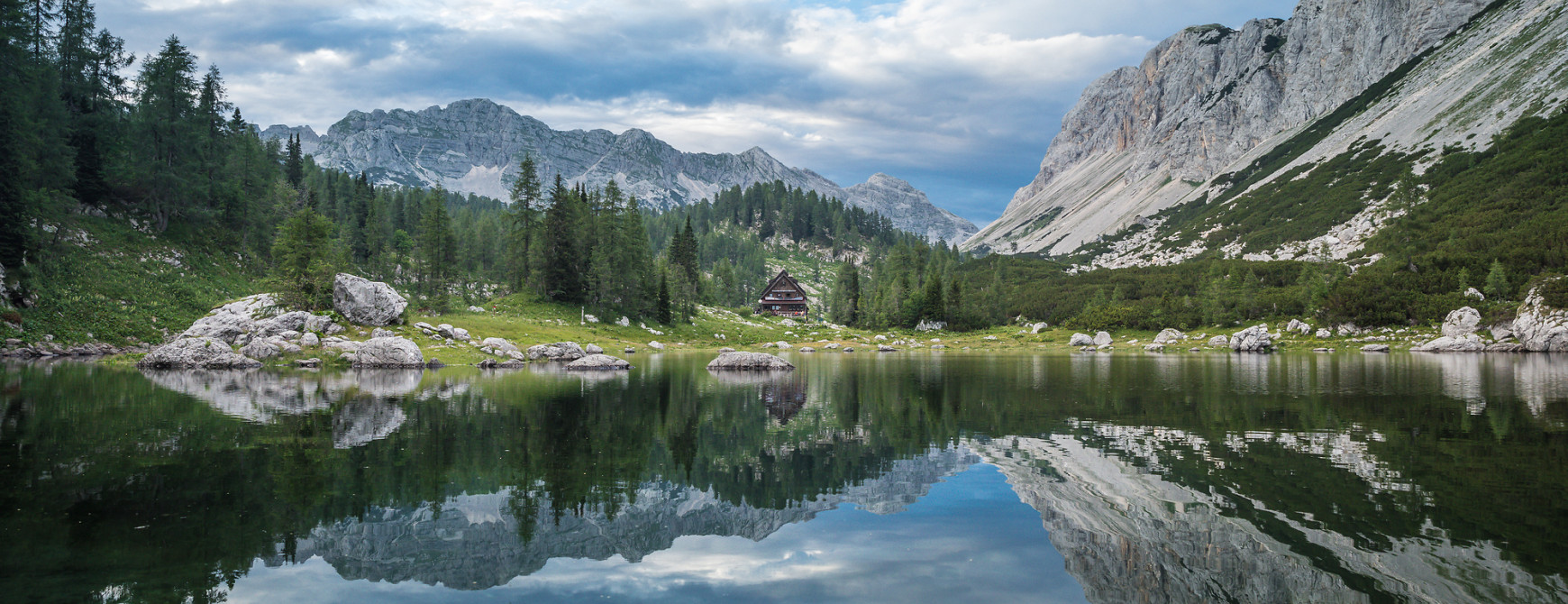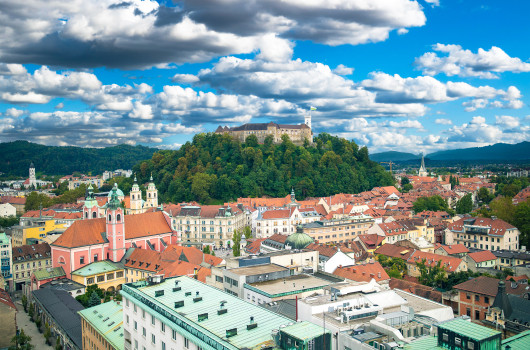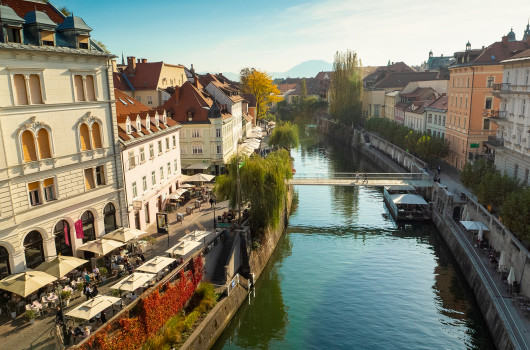Slovenia, officially the Republic of Slovenia, is a state in Central Europe at the crossroads of main European cultural and trade routes. It si a full member of the European Union since 2004. It is a sustainable destination of unique experiences.
Quick overview of Slovenia
- Population: 2 million
- Area: 20,273 km2
- Capital: Ljubljana
- Official language: Slovenian
- Currency: Euro
- Political system: Democratic Republic
- Highest peak: Triglav (2864 m)
- Coast: Adriatic Sea (47 km of coastline)
- Nature: the third most forested country in Europe
- Located in Central Europe, borders Italy, Austria, Croatia and Hungary
- Home to the oldest grape vine in the world (all vineyards cover 21,600 ha)
- Over 8.000 currently known karstic caves and pits, including the Škocjan Caves which have been included in the UNESCO list of natural world heritage
- Home to numerous top athletes (Tina Maze, Goran Dragić, Anže Kopitar), artists, musicians and composers (Slavko Avsenik, the author of the most frequently played instrumental composition in the world "Na Golici")
- Member of the European Union since 2004
- Slovenia is the only country in the world with "love" in its name
-
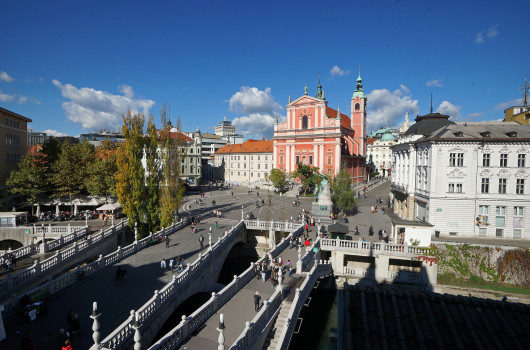
Prešeren Square in Ljubljana.
Author: I feel Slovenia
-
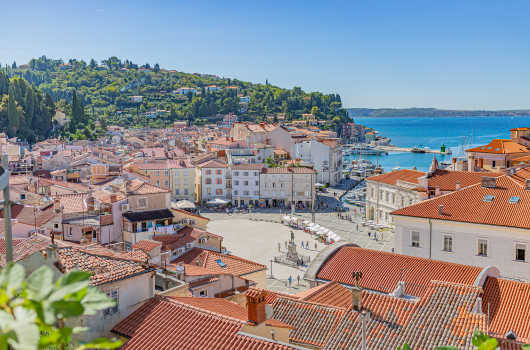
Piran, one of the coastal cities.
Author: I feel Slovenia
-
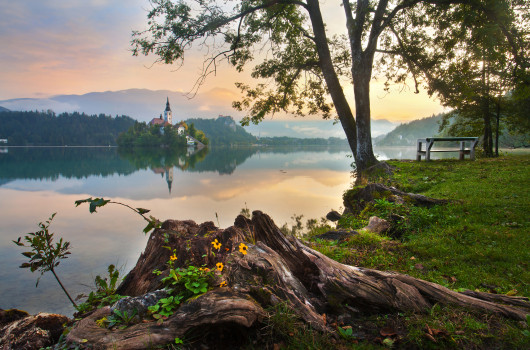
Bled.
Author: I feel Slovenia
-
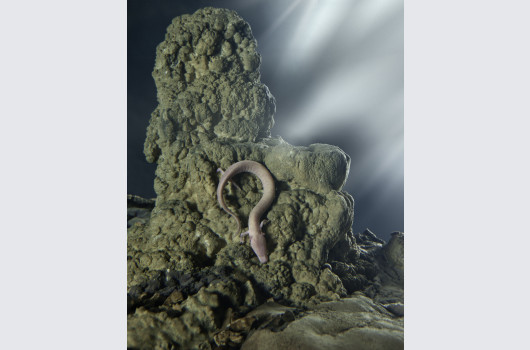
The olm (človeška ribica) in Postojna cave.
Author: I feel Slovenia
-
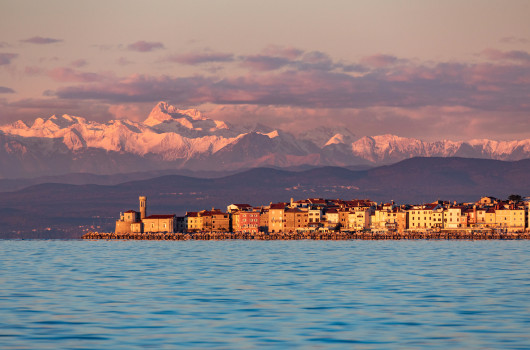
Slovenia has it all - both the sea and the mountains. View of Piran and Triglav.
Author: I feel Slovenia
-

Approximately a 440-year-old Old Vine in the central part of the city of Maribor.
Author: I feel Slovenia
-

Lipizzans - the name of the breed derives from that of the village of Lipica in Slovenia.
Author: I feel Slovenia
-

The heart of the vineyards in Špičnik.
Author: I feel Slovenia
Video about Slovenia
Relative to its geography, history, economy, culture, and language, it is a very diverse country distinguished by a transitional character. It occupies an exceptional position at the meeting point of the Alps and Mediterranean, and includes the mysterious Karst and expansive Pannonian plains. Geographical diversity - mountains, forests, sea - makes the region attractive to many. In Slovenia, you can swim in the sea in the morning and climb mountains in the afternoon. Historically, it’s been a well-established trade route between Europe and Asia and an important seaport for trade along the Adriatic and Mediterranean Seas.
Slovene is the official national language but Italian, Hungarian, and Romani are legally protected for the minorities. Slovenian is a South Slavic language and one of the few Indo-European languages that has preserved its dual (grammatical number). One of the major challenges faced by the Slovenian language at the beginning of the 21st century was Slovenia’s accession to the European Union, whereby Slovenian obtained the status of one of the EU official languages. Universities offer Slovenian courses for students to meet their specific neeeds. All interested foreigners can also learn Slovenian language online (freely accessible).
Since the earliest times the diverse and rich natural and cultural traditions have fostered the creativity of writers and artists. »Like heaven under Triglav«, as Slovenia was described by Ivan Cankar, one of the giants of Slovenian literature.
Slovenia is a member of all the major international organisations, including the European Union and NATO. In the first half of 2008, it was also the first of the new Member States to hold the EU Presidency. In the second half of 2021, Slovenia will hold the Presidency of the Council of the EU for the second time.
In Slovenia the natural world is dominated by green, while the country features diversity and contours in all regions. Two thirds of Slovenia are covered with forests. Slovenia’s forests are exceptional in their biodiversity, which includes around 19,000 species of animal. Only Finland and Sweden have a higher percentage of forestland than Slovenia’s 58.9%. 37% of territory is protected as Natura 2000. Slovenia has one of the highest numbers of undeground caves in the world in terms of country area. Number of endemic animals called proteus or „human fish“ live in them. This rare and mysterious species have the ability to fully recover after injury and even restore missing body parts.
Perhaps the most notable of Slovenia’s animals is the Lipizzan horse, beloved around the world for its extraordinary beauty and exceptional performance in entertainment and sports performances.
Quick overview
- The capital of Slovenia
- A lively green city comining the charm of a small capital and the self-confidence of large European city
- An exiting mix of different cultural traditions
- Varried offer of cultural and sport events
- Economic and cultural hub of Slovenia
- The city’s official symbol: dragon – by legend slain by Jason, the famous hero of Greek mythology, on his way across Ljubljansko barje (the Ljubljana Moors)
- Strategic post in the Roman Era called Emona
- Architectural image of the city was decisively characterised by the world renowned architect Jože Plečnik
- Kongresni trg is one of the central squares in Ljubljana and is home to the seat of the University of Ljubljana, the oldest and largest higher education and scientific research institution in Slovenia, founded in 1919
- University students give it its youthful appeal
- Area: 275 km2
- Population: 293,822
- Average January temperature: around 0°C
- Average July temperature: above 20°C
Author: I feel Slovenia
Quick facts about Ljubljana
Phone and postal services
Post of Slovenia provides postal, logistic, secure electronic postal and other services. Postal code for Ljubljana: 1000
Useful phone numbers:
-
Country code for Slovenia
00386 / +386
-
Ambulance
112
-
Fire Department
112
-
Police
113

